1.The Great Wall of China
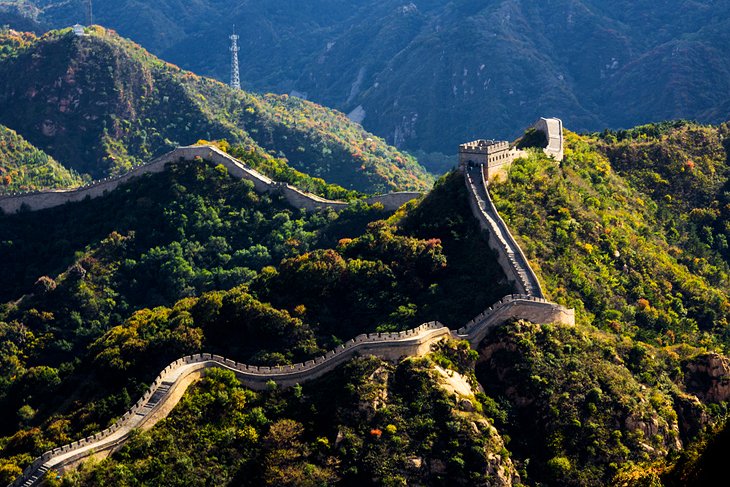
"Nobody can be a true hero unless he has been on the
Great Wall" goes the popular saying, one that clearly demonstrates the
importance that the Chinese place upon this unique ancient monument. The
magnificent Great Wall of China - known in Chinese as Changcheng, or the Long
Wall - stretches more than 6,000 kilometers from the fortresses of Shanhaiguan
in the east to Jiayuguan in the west, passing through Hebei, Tientsin, Beijing -
where the best preserved section of the wall can be visited - Inner Mongolia,
Ningxia, and Gansu along the way. Averaging six to eight meters in height but
rising as high as 16 meters in places, and wide enough for cavalry to pass, the
wall boasts numerous battlements and watchtowers, some dating back as far as
the 7th century BC, with the best-known areas added around 210 BC when its
various sections were joined. Today, the most visited section of the wall is
nearBadaling Pass northwest of Beijing, easily reached
by public transport or organized tours. Other restored sections worth a visit
include the section near Gubeikou, 130
kilometers from Beijing, and in Mutianyu, just 70
kilometers northeast of Beijing.
2 The Forbidden City and the Imperial Palace, Beijing
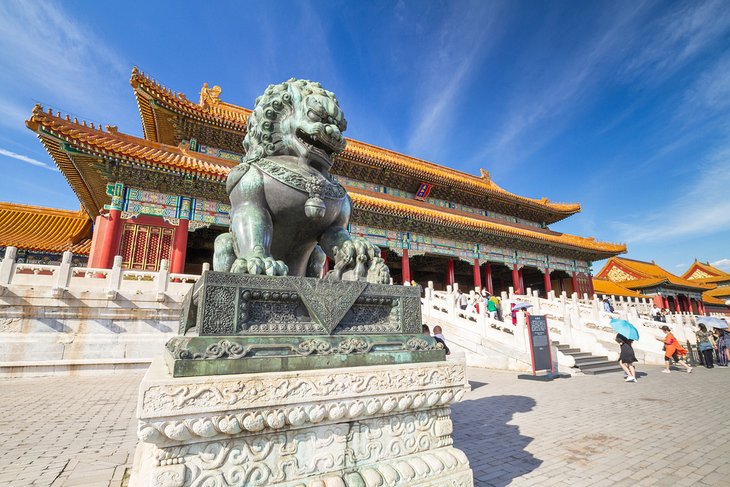
China's largest and most important building, the Forbidden
City - also known as the Imperial Palace - is in the heart of Beijing and is a
must-see when visiting the country. Started during the Yuan Dynasty between
1271-1368, much of the complex seen today (it's really many splendid palaces in
one) was built between 1406 and 1420 as the residence of 24 Ming and Qing
Emperors, whose presence forbade the entry of anyone other than the imperial
family and their courtesans. Covering some 720,000 square meters and protected
by a 10-meter-high wall with watchtowers and a wide moat, this massive complex
consists of areas set aside for ceremonial and administrative purposes, as well
as a private residence used by the emperor. While it can take many hours to see
everything, highlights include the five white marble Golden River Bridges; the
Hall of Supreme Harmony, a 35-meter-tall building housing the imperial throne;
and the exquisite emperor's banquet hall (the Hall of Preserving Harmony), to
name but a few.
3.The Terracotta Army
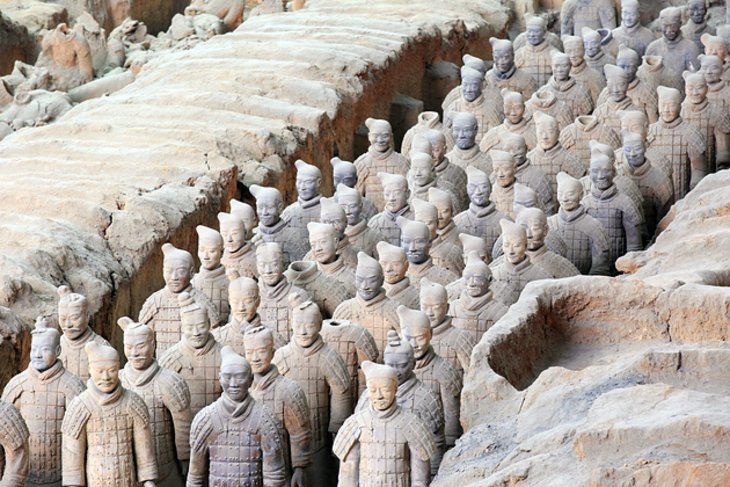
It was while digging wells on the outskirts of Xi'an in the
1970s that farmers stumbled across what was undoubtedly China's most important
archeological find: the Terracotta Army. Distributed over three large
underground pits and built to guard the First Emperor's tomb were more than
8,000 life-size warriors, some 520 horses, and more than 100 chariots, along
with numerous other non-military characters dating from around 280 BC. Although
some were severely damaged due to the passing of time, many of the statues
unearthed have been painstakingly re-assembled and stand as testament to the
importance bestowed upon the emperor and the afterlife. The site - part of the Emperor
Qin Shi Huang's Mausoleum Site Park - is one of
China's most important tourist destinations and offers the unforgettable
experience of standing in front of this assembly of soldiers and horses as if
inspecting a centuries-old parade.
4 The Summer Palace
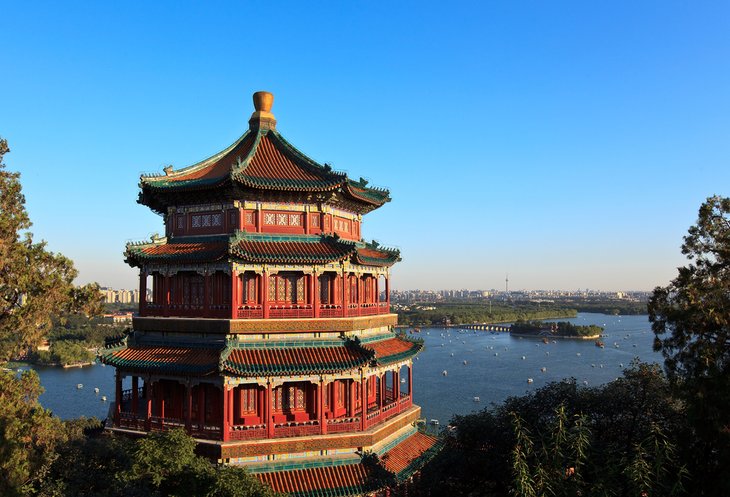
An easy 15-kilometer commute from Beijing, the sumptuous
Imperial Summer Palace (Yíhé Yuán) is set amid more than 700 acres of beautiful
parkland and is one of China's most visited attractions. While the palace
itself was built in 1153, its large lake was added in the 14th century to
enhance the Imperial
Gardens. Highlights include the magnificent Hall of Well-being and Longevity
(Renshou Dian) with its throne, and the beautiful Great Theatre, a private
three-story structure built in 1891 to satisfy the imperial family's love of
opera. Other highlights include the Hall of Happiness and Longevity (Le Shou
Tang Hall) with its lovely gardens and courtyards, as well as many miles of
picturesque pathways and walking trails.
5 Cruising the Li River
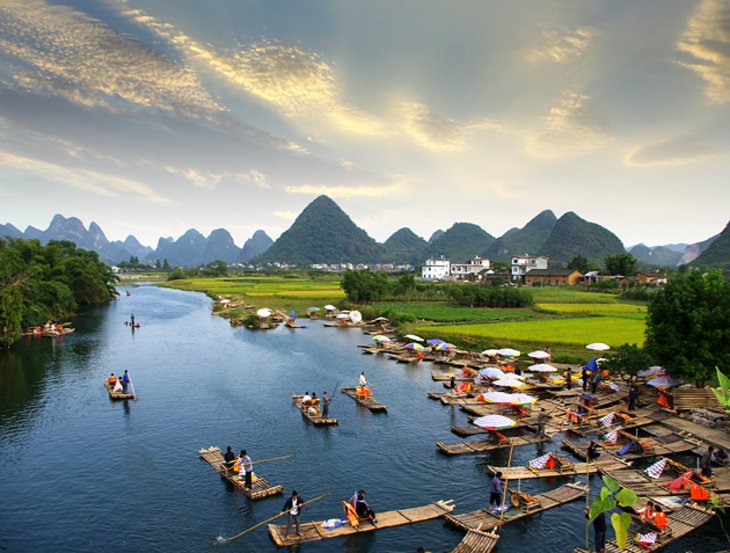
The town of Guilin, in the northeast corner of Guangxi,
boasts some of China's most beautiful countryside and is famous for the
crystal-clear rivers that meander through the town and its ring of mountains.
While for hundreds of years this unique scenery has attracted poets and artists
and has been the subject of countless fairy tales and legends, these days it's
inundated with tourists from around the world wanting to see this natural
splendor up close. The best way to enjoy the area is to take a boat trip along
the Li River. The most popular stretch is from Guilin to Yangshuo where the
river meanders peacefully through some 80 kilometers of beautiful bamboo
forests, dense reed-beds, and remarkable rock formations and caves with
romantic names such as the Mount of Unique
Beauty, Elephant
Trunk Hill, and Reed
Flute Cave. Depending upon the type of boat used - you can choose from small
punts to larger multi-passenger riverboats - trips can take anywhere from a few
hours to multiple days.
6 Chengdu Research Base of Giant Panda Breeding

No visit to China would be complete without at least one
panda experience. While the country's top zoos boast many fine specimens of
these fascinating creatures, the best place to see them in a close
approximation to their natural habitat is at the excellent Research Base of
Giant Panda Breeding in Chengdu, located in the province of Sichuan. Here
you'll have the chance to watch as many as 80 pandas go about their daily
routines, from foraging to playing in the facility's large park-like setting.
In addition to viewing these splendid animals up close, you'll learn a great
deal about them from the many permanent exhibits and displays detailing ongoing
conservation efforts to safeguard their future. English language tours are
available (if possible, try to time your visit for the morning feeding sessions
when the pandas are at their most active).
7 The Yangtze River and the Three Gorges
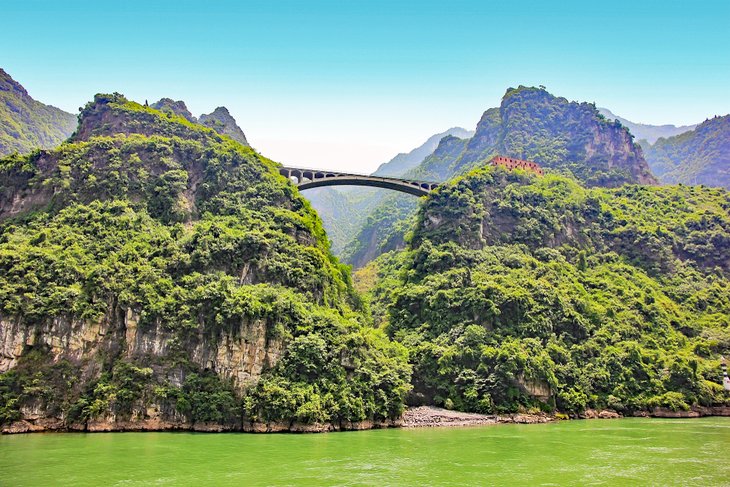
Known in China as Chang Jiang ("Long River"), the
mighty Yangtze River extends more than 6,000 kilometers, making it the longest
and most important river in China and the third longest in the world after the
Amazon and the Nile. Flowing from Tibet in the west to Shanghaiin the east through
eight provinces, the Yangtze has, for more than 2,000 years, been China's major
transportation route (some 2,700 kilometers are navigable). Its vast catchment
area with its 700 tributaries cover about one-fifth of the total area of the
country and encompass a quarter of the country's agricultural land. While its
immense length ensures the river can be visited at numerous points in China, by
far the most popular for tourists is the beautiful Three Gorges - Qutang, Wu,
and Xiling - a 200-kilometer stretch between the towns of Fengjie and Yichang. In
places a mix of raging torrents and dangerous shallows, here the river winds
its way through the gorges and their rugged cliffs and high mountain peaks in a
stretch of scenery as dramatic as the Grand Canyon. Numerous
sightseeing options are available, from luxurious riverboats focusing on the
region's many historical attractions and places of scenic beauty to challenging
adventure tours along the most dramatic sections of the river.
8 The Classical Gardens of Suzhou
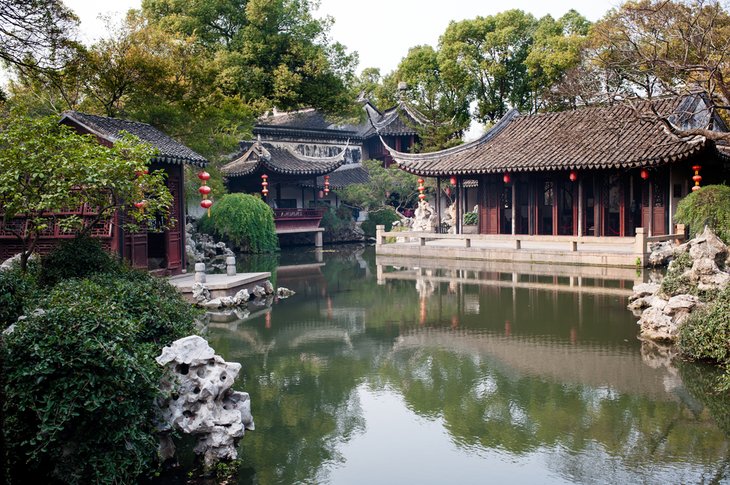
Considered one of the world's most important historic
gardens - hence their designation as a UNESCO World Heritage Site - the
Classical Gardens of Suzhou should rank highly on your China itinerary. In the
historic city of Suzhou in Jiangsu province, these magnificent gardens were
established in the 11th century at a time when the city was experiencing
unprecedented growth and were among some 270 or more gardens planted here. Of
the surviving restored gardens, the most famous is the delightful Garden
of Lingering, a seven-acre site laid out in 1800 on the site of a park
originally created during the Ming Dynasty. One of the most famous garden
complexes in China, the garden boasts a pool, several attractive buildings, a
man-made hill, a grove of peach trees, and a lovely covered pathway on the
walls of which hang more than three hundred stone tablets engraved with old
Chinese characters. Also worth visiting is the Garden
of the Cang Lang Ting Pavilion, a two-acre garden offering many unique features
including a double arcade connecting the inner and outer sections.
9 The Potala Palace, Tibet
Another of China's most recognizable historic structures is
the magnificent Potala Palace in the town of Lhasa, Tibet. Constructed as a
fortress and residence for the Dalai Lama, it was for centuries the center of
political and religious power and contains many of the religion's most
important treasures. The first of the two Potala Palaces, the Red
Palace, was built in the 17th century and contains the complex's most important
shrines in the Enthronement Hall, the walls of which are covered with murals
depicting scenes from the lives of the Dalai Lamas and the Tibetan kings. Other
highlights of the Red Palace are its many vast halls devoted to the religion's
teachings, and the elaborate tombs (known as stupas) of a number of Dalai
Lamas. The equally impressive White Palace was
completed in 1648 and includes the sleeping quarters, study, and reception
rooms, most untouched since 1959 when the Dalai Lama fled Tibet. While in
Lhasa, be sure to visit the superb Jewel Gardens.
Part of the Dalai Lama's summer residence, these 90-acre gardens were first
started in the 1840s and encompass everything from grand palaces and pavilions
to pleasant lakes.
10 Shanghai's Promenade: The Bund
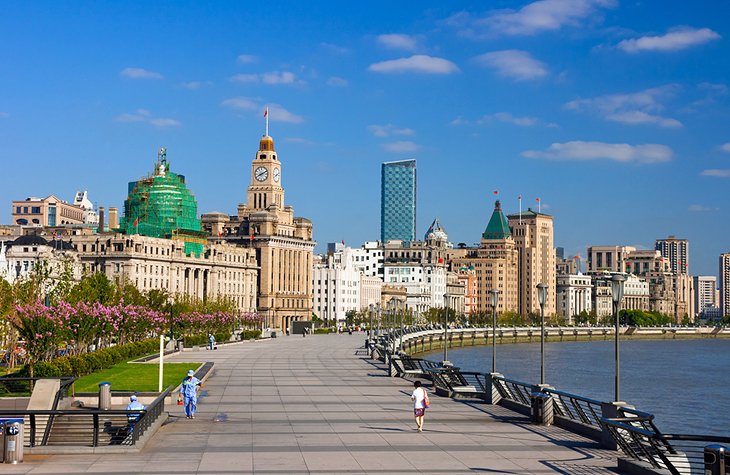
A remarkable act of smart city planning and preservation can
be seen in Shanghai's splendid riverside promenade, the Zhongshan Lu or, as
it's perhaps better known, the Bund (Wàitān). As you stroll this wide
pedestrian zone along the Huangpu Jiang River, you'll almost forget you're
bang-smack in the middle of China's largest city (Shanghai's population exceeds
25 million people). Famous for its European feel, a fact owed to the district's
past as the location of the city's International Settlement, the Bund is popular
for its 52 preserved English and French influenced buildings, many now
restaurants, cafés, stores, and galleries. Representing a variety of influences
from Gothic to Renaissance styles - including a number of Art Deco buildings -
the architecture includes highlights such as the old harbor customs office with
its bell tower and the majestic Peace Hotel. For the best views of the Bund,
visit the 468-meter Oriental Pearl Tower on
the opposite bank of the Huangpu Jiang River.
11 Hangzhou's Historic West Lake
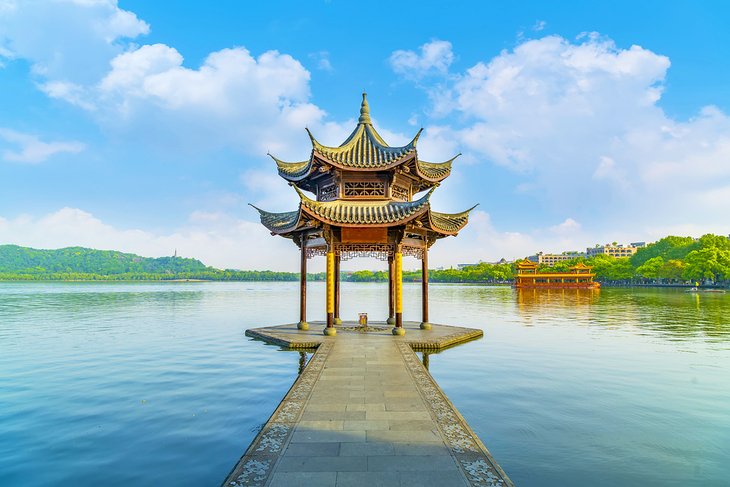
Few cities in China can boast quite the same concentration
of splendid historic sites and ancient temples as the city of Hangzhou
(Hangchow), capital of Zhejiang province at the southernmost end of China's
famous Grand
Canal. Much of this rich collection is gathered around lovely West Lake, a
six-kilometer-square stretch of water in the heart of the old city that is
surrounded by numerous hills, pagodas, and temples. Divided into five distinct
sections by man-made causeways dating back to the 11th century, it's a
marvelous area to explore on foot as you cross from one lake to the next only
to be met with another cluster of fine old buildings (it's particularly
pleasant in spring when its many peach trees are blossoming). Part of the fun
is lingering on the lake's many fine old bridges, one of the best being the Broken
Bridge (Duanqiao)
linking the Baidi Causeway with the shore, and exploring Little
Paradise Island with
its four mini-lakes linked by the zigzagging Bridge of the Nine
Arches.
12 The Mausoleum of Light: The Northern Imperial Tomb
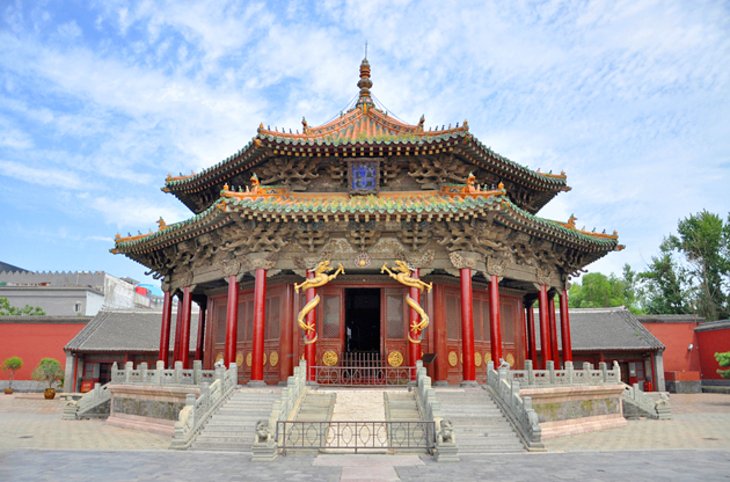
In China's mountainous northeastern region is the old city
of Shenyang, an important center for trade and culture and home to the
Mausoleum of Light (Zhaoling), also known as the Northern Imperial Tomb. One of
northeastern China's most important historic sites, the tomb is noted for its
unique architectural style: a combination of traditionally arranged Chinese
burial sites and castle-like buildings of the early Qing period. Buried here is
Emperor Huang Taiji, who reigned from 1626-35, in a vast site covering more
than 180,000 square meters that took eight years to complete and is notable for
its "Path of Souls," a laneway lined with stone columns and
sculptures of the emperor's favorite horses. Another important site is the
imposing Imperial Palace dating from the early Qing era, the second largest
completely preserved palace complex in China after the Imperial Palace in
Beijing. The complex served as a residence for the first Qing Emperors and
includes several splendid courtyards around which are grouped numerous
buildings, including the Hall of Exalted Government (Chongzheng Dian) housing
the imperial throne.
Source : http://www.planetware.com









0 comments:
Post a Comment